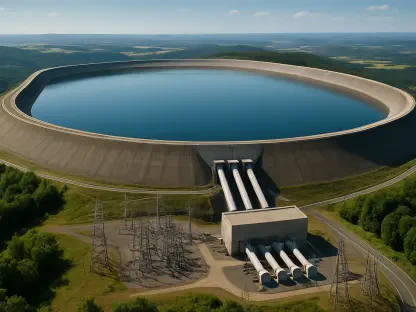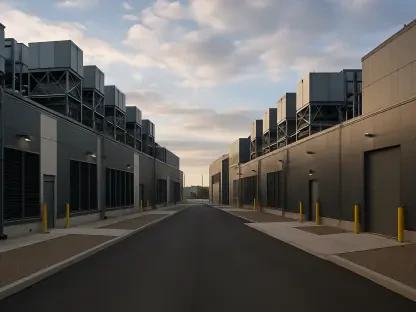The San Diego region has long grappled with an environmental and public health crisis stemming from untreated wastewater flowing from Mexico’s Tijuana River into the United States. A significant move by the United States International Boundary and Water Commission (USIBWC), in partnership with the Environmental Protection Agency (EPA), aims to address this long-standing issue. These federal agencies have announced the expedited expansion of the South Bay International Wastewater Treatment Plant to combat cross-border sewage pollution. Initially planned to increase daily processing capacity by 40% over a span of two years, the initiative will now be completed in just one hundred days. This bold acceleration underscores the urgent need to alleviate pollution and odor issues that have plagued U.S. residents, promising to deliver long-term solutions. Prominent figures, such as Imperial Beach Mayor Paloma Aguirre, play pivotal roles in driving rapid action, expressing gratitude for the federal agencies’ responsiveness. Aguirre emphasizes the importance of the expansion, describing it as the most substantive federal effort to date in battling the sewage catastrophe impacting San Diego, while acknowledging ongoing challenges. In addition to these federal interventions, the fast-tracked project is accompanied by strategic local initiatives aimed at tackling the sewage issue comprehensively, emphasizing collaborative efforts for enduring ecological remedies.
Joint Federal and Local Efforts
The joint federal and local collaboration on sewage management in San Diego marks a historic stride toward resolving the region’s environmental crisis. This collaboration involves federal agencies, such as the USIBWC and EPA, coordinating with local governments to ensure the expedited expansion of the South Bay International Wastewater Treatment Plant effectively reduces cross-border pollution. With the plant upgrade increasing processing capacity from 25 million to 35 million gallons per day, the project is projected to significantly reduce harmful effluents entering U.S. borders, enhancing both local environmental conditions and public health. Through coordinated actions, these agencies aim to address decades of toxic sewage flow issues, with Imperial Beach Mayor Paloma Aguirre actively advocating for innovative local measures. Aguirre’s leadership in driving the swift responses of federal bodies highlights the significance of uniting governmental entities and harnessing advanced engineering solutions. Aguirre, who emphasizes the importance of a collaborative strategy as she campaigns for the vacant County District 1 seat, illustrates a dedicated push toward immediate improvements paired with long-term sustainability. As her advocacy aligns with federal ambitions, this cooperative framework gradually reshapes the landscape of regional ecological challenges.
Community Advocacy and Local Initiatives
Community advocacy has emerged as a driving force in addressing the sewage crisis, with local leaders championing targeted initiatives aimed at transforming San Diego’s environmental landscape. Imperial Beach Mayor Paloma Aguirre, a key advocate for rapid intervention, proposes the “County Sewage Action Plan,” which delineates specific objectives to tackle pollution hotspots. This comprehensive plan includes strategies to eliminate problem areas like the toxic sewage hotspot near Saturn Boulevard and bolster public health protections through innovative solutions, such as upgraded air filtration systems in schools and comprehensive health studies. By appointing a dedicated county sewage crisis chief to coordinate governmental actions and overseeing a report on sewage’s economic impact, the plan seeks a holistic approach to enrich San Diego’s environmental health. Aguirre’s advocacy extends to engaging with South County community members, seeking additional funding and support for local measures in solving the sewage crisis, while maintaining communication with federal agencies. Her commitment to collaborative efforts resonates deeply within the community, reflecting a shared dedication to fostering innovative solutions. These targeted initiatives serve as a testament to the power of community-driven advocacy, emphasizing the need for sustained collective engagement.
Broader Context and Future Solutions
Beyond immediate measures, the broader context of the sewage crisis reveals its deep-rooted impact on regional infrastructure and public health. The ongoing pollution along the U.S.-Mexico border leads to frequent beach closures, adversely affecting residents’ health and lifestyle. Federal and local officials, including EPA Administrator Lee Zeldin and Chula Vista Mayor John McCann, actively seek sustainable, long-term solutions to this multifaceted issue. During recent visits, Zeldin emphasized the importance of extreme collaboration and quick action, reinforcing the federal government’s commitment to addressing sewage pollution through innovative infrastructures. McCann, who competes with Aguirre in an upcoming special election, echoed sentiments of bipartisan collaboration to foster creative solutions beneficial to affected communities. This collective narrative reflects a growing recognition among officials and residents that united efforts can effectively mitigate the sewage crisis. The County Air Pollution Control District’s recent observations highlight infrastructure challenges, including sewage pipeline diversions exacerbating pollution at South Bay beaches, underscoring the necessity for continued cooperation. As new environmental and health strategies unfold, stakeholders must remain vigilant, ensuring enduring resilience against ecological threats.
Conclusion and Lasting Impacts
The San Diego area has been dealing with an environmental and public health crisis for years due to untreated wastewater from Mexico’s Tijuana River entering the United States. To tackle this issue, the United States International Boundary and Water Commission (USIBWC) has partnered with the Environmental Protection Agency (EPA) on an initiative to expand the South Bay International Wastewater Treatment Plant. Originally scheduled to boost processing capacity by 40% over two years, this project will now be completed in just 100 days, highlighting the urgency of addressing the pollution and odor affecting local communities. Imperial Beach Mayor Paloma Aguirre has been instrumental in pushing for swift action and appreciates the federal agencies’ responsive efforts. She regards the expansion as the most significant federal response yet to San Diego’s sewage crisis, though acknowledges challenges remain. Alongside federal actions, the project includes local strategies to comprehensively tackle the sewage problem, focusing on collaborative efforts for sustainable ecological solutions.









